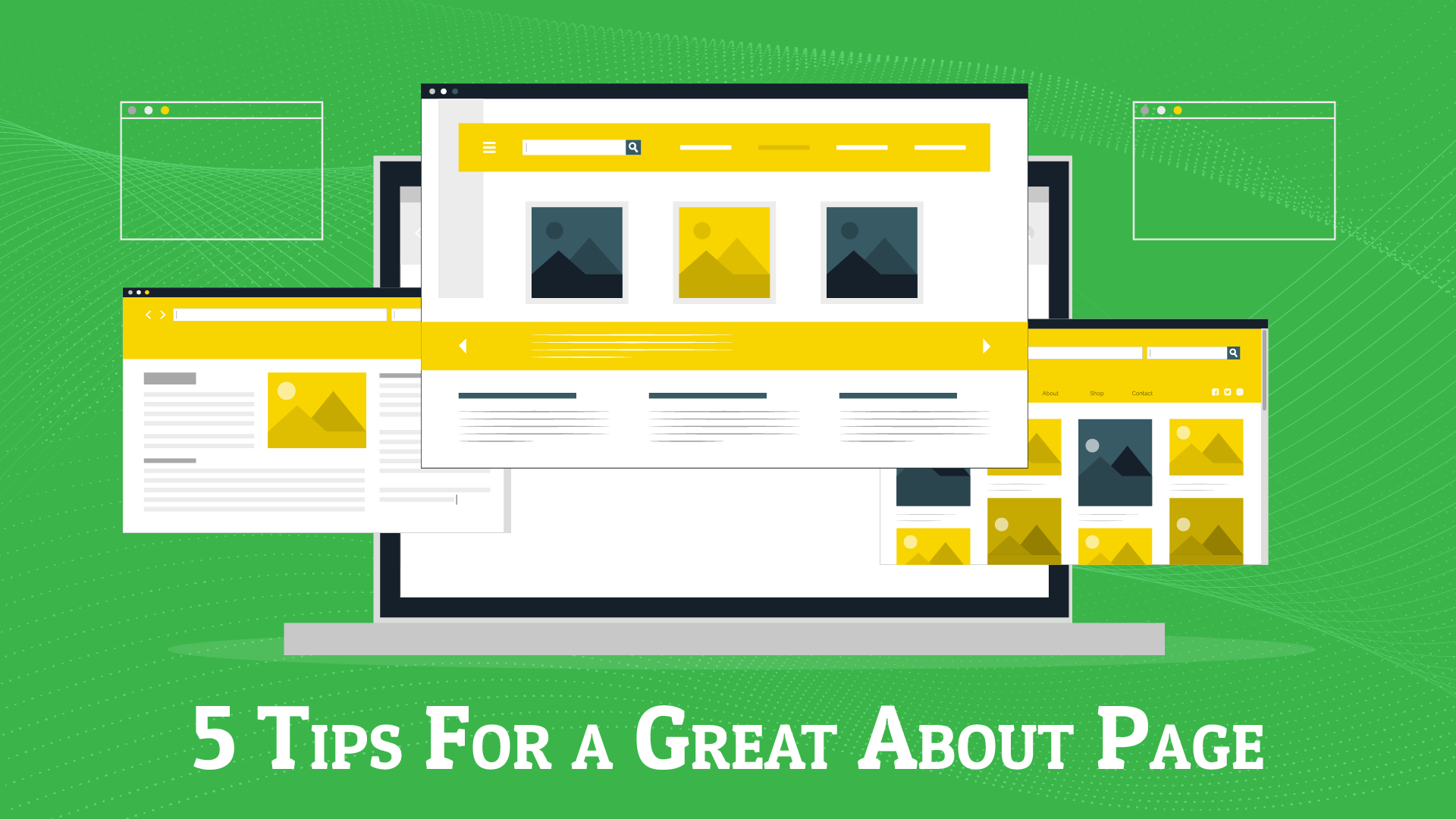
About Pages are often mistakenly considered “filler” pages on a website. Most business owners will treat them as afterthoughts, littering them with irrelevant content that is anything but customer-focused.
If you’re one of those people, allow us to break your bubble: About Pages are just as important as Home Pages and shouldn’t be neglected. While they may look like the perfect place to paste a huge “Who We Are” heading and tell visitors how awesome your business is, they have a bigger job to do.
More than just a place where businesses tell their stories, About Pages should act as a gateway to conversions. For that to happen, it should be clear to visitors what’s in it for them.
Keep reading for quick tweaks that will make your About Page work harder for your business.
Remove “I” and “We” as Much as You Can
It can be tempting to boast about your business’s achievements on About Pages. Yet, although it may sound counterintuitive, the words “I” and “we” shouldn’t be your focus there.
Instead, switch your perspective. What does your business help people do? How will your product or service make their lives better?
Take a look at Copyhackers’ About Page below. Notice how everything from the headline to the body copy tells visitors not only what they do – but what they can do for them.
(Source)
Of course, that doesn’t mean you’ll never use “I” and “we” anywhere on your page. Just know that they shouldn’t be focus words. Not on your About Page or anywhere on your website, for that matter.
Put Your Customer First
Your potential customer is Superman. They’re the hero of your story. And the story you’ll tell should let them know what their sweet victory looks like.
Putting your customer first is the single best way to prove that your solution is what they’ve been waiting for. Social proof can go a long way to make that happen.
Here’s an example from Pluralsight’s About Page:
(Source)
There are two strong forms of social proof there: a logo bar and customer testimonials. Both are working towards helping potential customers see themselves on the page. If a prospect works for an organisation similar to any of the ones listed above, they’ll know Pluralsight is the ideal solution to help them.
As for the testimonial, notice how it isn’t directly praising Pluralsight. Instead, it mentions how the solution has helped a real customer with real problems.
Show the Benefits of What You Offer
Features are awesome. Without mentioning your features, knowing what goes into your solution would be impossible.
Still, there’s a reason why leading with benefits is generally a good idea. In all honesty, people don’t care about how your business works – at least not at first. Painting a picture of how your expertise will solve their pains, based on real customer experience.
Quick example. At SixFive, we know a lot of customers struggle to understand tech jargon. Now, have a look at the screenshot below:
(Source)
Because we know our customers’ pain points, one of the first things we’ve added to our “About Us” bullet list is that we “speak geek/nerd and can translate to English.”
This way, if jargon is a make-or-break objection for visitors, we’ve already anticipated it early on the page.
Add Some Humanity
Human faces are powerful. Simply showing visitors that there are humans behind your product or service can be a decisive trust factor. That’s especially true when pictures go along with a well-written profile.
If you check out Moz’s About Page, there are enough human pictures to bring a comforting sense of humanity.
(Source)
For online businesses in particular, human faces are essential. You’d be surprised at how many business owners rely on vectors and illustrations to introduce their team members. Where’s the trustworthiness in that?
That’s why, as a reliable entrepreneur, you should avoid using illustrations where images are necessary.
Show Them Your Journey
Once the initial benefits have been laid out, it’s alright to talk about your business and how it’ll be helping customers for a long time. As long as prospects feel connected to your brand, they’ll want to know more about what you do. Because what you do has everything to do with their best interests.
Hubspot’s About Page features an entire timeline of the company’s journey, starting from the moment it opened its doors.
(Source)
Not only do the images feature real people, summits, and office locations (trustworthiness!), but the captions also let visitors know that Hubspot was built on a strong foundation. And it’s here to stay.
What about your business? What do you have in store for prospects and customers? How will your future plans benefit them? How can you prove you’ll be there for them – for years to come? They’d love to know.
Wrapping Up
It’s your turn to give your About Page the recognition it deserves.
Once you apply the tweaks mentioned in this article, your page will lose its “filler” category. As a replacement, you’ll have a conversion and customer-focused page with essential business information.
And, as a bonus, your visitors are more likely to enjoy reading it.
